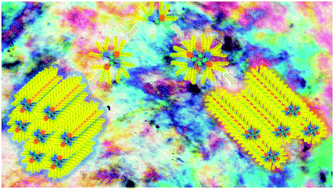Columnar self-assembly of novel benzylidenehydrazones and their difluoroboron complexes: structure–property correlations†
Abstract
Organoboron complexes are considered to be an important class of optically dynamic materials and because of their imperative properties, they have been unceasingly studied in a wide range of scientific areas. In this context, a new family of D–A–D′ architectured boron difluoride complexes FB1–4 derived from arylhydrazones HZ1–4 has been synthesized and characterized. The work also deliberates detailed studies on their thermal, self-assembling and optoelectronic properties with respect to structural modifications. The systematic studies reveal that the new arylhydrazone ligands and their BF2 complexes exhibit a prospective columnar mesomorphism with different 2D lattice geometries at room temperature, owing to their critical structural features. Interestingly, an unusual morphological cross-over from a columnar hexagonal to rectangular mesophase has been confirmed in one of the investigated pseudo-discoidal boron complexes, FB4. The optoelectronic studies showcased their ICT dominating dye properties. Finally, the experimental results have been consciously correlated with quantum chemical simulations.



 Please wait while we load your content...
Please wait while we load your content...